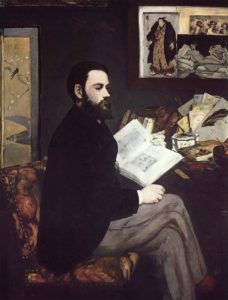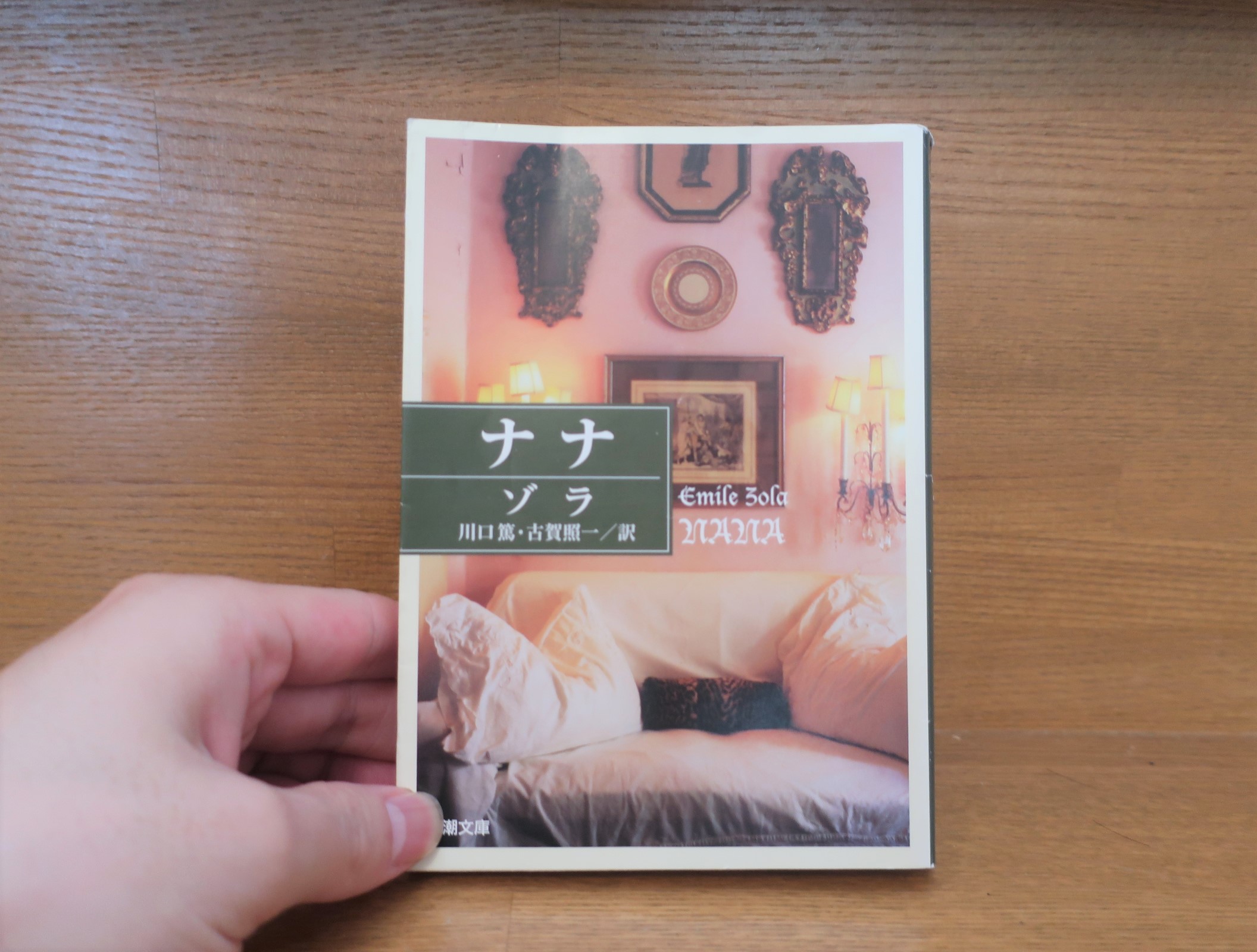Summary and synopsis of "Nana," volume 9 of "The Lugon Makkar Series."

Emile Zola (1840-1902)Wikipedia.
Nana" is the ninth volume of the "Lugon-Macall Series" completed by Emile Zola over a period of 24 years, and was published in 1880.
I read "Nana" translated by Atsushi Kawaguchi and Shoichi Koga, published by Shinchosha Publishing Co.
Let's get right to the synopsis. I will quote the synopsis from the back cover.
Nana was born in the working class district of Paris as the daughter of the female protagonist of the masterpiece "Izakaya". Her natural beauty, combined with her growing physical beauty, suddenly appeared on the stage of the Théâtre de la Variété in a state of near-nudity. The Parisian social scene is overwhelmed by the appearance of this debauched "Venus. Nana, who is also a high-class prostitute, bilks the famous people she approaches out of huge sums of money and destroys their entire lives one after another. This is the greatest masterpiece of the naturalist writer Zola.
AmazonProducts Page.
Nana" is a sequel to "Izakaya" and the protagonist Nana is the daughter of Gervaise, the protagonist of "Izakaya.
In the family tree, it is located in the McCall family on the right side.
In the previous film, "Tavern," a bad man, poverty, and alcohol destroyed the family, and Gervaise died a tragic death.
Nana leaves her miserable home and begins a new life as a prostitute.
And as the synopsis says, her beauty and uninhibited personality won over many men, and she reigned supreme in Paris.
The same Shinchosha commentary on "Sekai Bungaku Zenshu 10 Nana," translated by Atsushi Kawaguchi and Shoichi Koga, describes "Nana" as follows.
In a word, "Nana" is a very interesting novel. Anyone who reads it with an open mind can enjoy it. It probably does not need a single line of explanation to be interesting. Nana" is a work that stands on its own.
Shinchosha, Sekai Bungaku Zenshu 10 Nana, translated by Atsushi Kawaguchi and Shoichi Koga, p. 495
Nana" is so interesting that the translator says, "Not a single line of explanation is needed.
The translator says that this is a very thought-provoking story about contemporary Japan.
Those in doubt should read "Nana. One cannot read through "Nana" without reading into it most of the corrupt aspects of Japanese society as it exists today.
Shinchosha, Sekai Bungaku Zenshu 10 Nana, translated by Atsushi Kawaguchi and Shoichi Koga, p. 499
I have often said that Zola's story of the French Second Empire is directly related to contemporary society. I think it is fair to say that "Nana" is a work that embodies this idea very well.
Thoughts - From a Dostoevskyian Perspective
The protagonist of this work is Nana, a high-class prostitute.
She takes men captive, rakes in unbelievable sums of money, and then spends it with utter carelessness. She has no sound financial sense of saving or spending money effectively.
Just wind it up and spend it. Money moves very simply there.
The strange thing about "Nana" is that she is the protagonist of the story, even though a bad girl who takes money from men is usually portrayed as the villain of the story.
Nana spent her childhood in very unfortunate circumstances in the previous film "Izakaya". She was a girl who grew up in a squalid environment, not knowing the warmth of a family.
However, she had her own brightness and spontaneity.
She grows up, gains overwhelming beauty, and takes revenge on all the world that has continued to hurt her by taking money from men.
Moreover, the amazing thing about Nana is that she does it unconsciously.
She herself has no desire to cheat men and take revenge on the world.
She is just mollified that men are willingly giving her money and she is spending it as she pleases. She is not living her life with the intention of taking a lot of money because she likes it, or taking revenge on men.
She existed as a money circulation system in which men with money to spend in a corrupt society poured money into her, which she then re-spewed back into the world. Unintentionally.
This is where we see the modern system of consumer capitalism. Money is in constant motion. The money made changes form and moves on to the next consumption, which in turn creates the next consumption.
Such a huge flow of money is already represented in this novel through a woman named Nana.
In this regard, Werner Sonnwald, a world-renowned economist and sociologist along with Max Weber, has published a book with a very exciting title, "Love, Luxury and Capitalism.
This book provides an easy-to-understand explanation of the system of economic cycles contained in the "Nana" novels. If you are interested in this book, please pick it up.
Also, Veblen'sA Theory of the Leisurely Class."is also recommended because it explains the relationship between money and desire.
In this novel, Zola depicts the corruption of the French Empire, the backstage of the theater and media industries of the time, and the lives of prostitutes, a world filled with glamour and debauchery.
If "The Stomach of Paris" is a work that exquisitely symbolizes desire in the form of "food," then "Nana" can be said to be a straightforward depiction of sexual desire.
In addition, Zola's signature cinematic descriptions are still present, making for an easy read.
Nana" is one of the greatest works of world literature.
Although I did not directly mention Dostoevsky in this review, the novel was very important to learn about this period of French political corruption and the money wasters with whom the rich were competing.
As an introduction to Zola, I highly recommend the previous two books, "Izakaya" and "Nana".
And I would also highly recommend the "Gotta Have It" that I will introduce in the next article.
It is a marvelous work that exposes the marital situation of the bourgeois class in the most vivid way possible. This work also depicts the sordid relationships between men and women hidden behind the hypocrisy of the upper class. If you read it together with "Nana," the French situation in the middle of the 19th century will come to the surface very vividly. Highly recommended.
The above is a synopsis of Zola's masterpiece "Nana" - exposing the glamorous world of stage actresses and the realities of the upper class! The above is a synopsis of Zola's masterpiece, "Nana".
Next Article.
Click here to read the previous article.
Related Articles





































